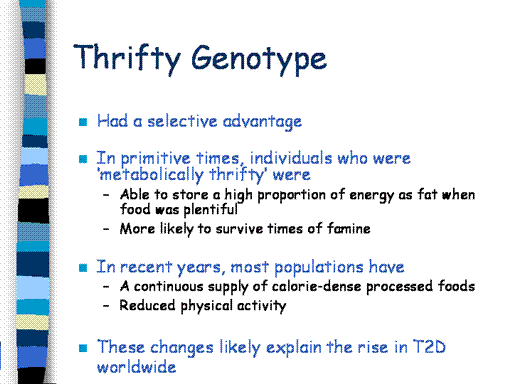As early as
1962, Neel hypothesized that T2D represented a ‘thrifty genotype’, which
had a selective advantage. He
postulated that in primitive times, individuals who were ‘metabolically
thrifty’ and able to store a high proportion of energy as fat when food
was plentiful were more likely to survive times of famine.
However, in recent years, most populations have a continuous
supply of calorie-dense processed food, as well as a decline in their
physical activity. This likely
explains the rise in T2D prevalence worldwide.
